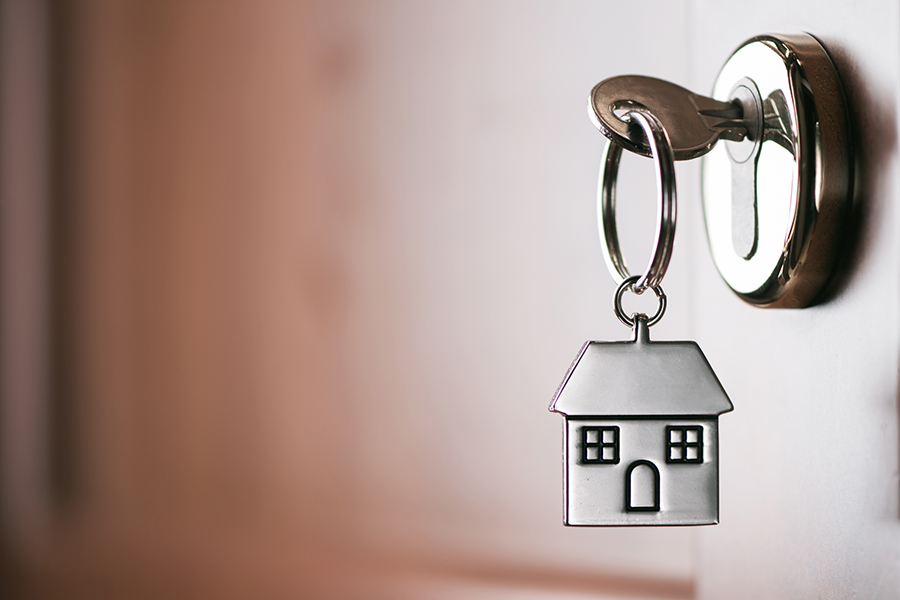Not all that long ago, mortgages were "almost free." Now they’re not
Anyone who took on a mortgage over the past couple of years might be excused for looking back on that time as better days, despite the global context.
“During the pandemic we experienced record-low interest rates – insanely low interest rates,” says Renée Stribbell (Human Resources ’97), owner of Your Mortgage Needs, an Edmonton-area based mortgage brokerage.
“It was kind of a pocket in time. If you got a mortgage then, fixed rate or variable, basically you had your mortgage for almost free for a couple of years.”
That time is over. In March 2020, the outset of the pandemic, the Bank of Canada’s policy interest rate – to which most consumer interest rates are tied – was a miniscule 0.25%. Two years later, as the BoC sought to ground soaring inflation, it began to creep up. Then it bolted. As of August 2023, the rate was 5%, a rise that Stribbell expected.
Tha can mean anxiety for current and future mortgage holders alike. But Stribbell doesn’t think owners and buyers should panic. To help everyone keep calm, we asked the veteran broker to explain the impact of rising rates and what we can do about them.
To lock in or not to lock in

These days, Stribbell receives calls from clients with variable interest rate mortgages and a fair amount of fear. This loan floats with the policy interest rate, rising and falling (emphasis on the former). In exchange for the risk, they’re lower than fixed rate mortgages, which are set for a term, giving borrowers access to a greater range of the housing market.
Stribbell knows, however, that what goes up should come down.
“If you have a variable-rate mortgage and you panic and lock in at 5% today, and six months from now rates drop to 3%, how are you going to feel about that?” she asks.
(Indeed, in later 2018, the BoC policy interest rate rose to 1.75% before backsliding to 0.25% less than two years later.)
Also, consider the law of averages, Stribbell adds.
“If you took a variable rate mortgage when prime [the base interest rate charged by banks] was low, you saved a lot of money during that time.” Over the term of a mortgage then, when rates rise and fall, “on average you saved a lot of money.”
How to know if you can handle the ups and downs

Lenders determine a client’s borrowing power with a stress test, says Stribbell. This financial “what if” looks at their ability to manage payments 2% greater than a given rate or 5.25%, whichever is greater.
Homeowners with variable rates can do this themselves by crunching numbers whenever they like to investigate the impact of higher rates.
“Be crazy with that worst case scenario,” Stribbell advises. What would 6% look like? Seven percent? An online calculator can help explore those hypothetical outcomes.
Be prepared for that worst case scenario

Currently, Stribbell does not anticipate a return to the double-digit interest rates of the 1980s. That said, she wonders if the fallout of the current spike might be felt just as keenly. Consumer debt in Canada, she points out, is much higher than decades ago.
This means rising interest rates on not just a variable rate mortgage but on anything from vehicle loans to some credit cards.
“If you have debt outside of your mortgage, work on paying that off first,” suggests Stribbell. Take the difference between your current mortgage payments and highest you can comfortably manage and put it toward higher-interest loans, eliminating them before you have to pay more for your home.
If you’re lucky enough to have no such debt, build up your financial defenses by channelling the money into building up your cash or investments, says Stribbell, treating your mortgage as a motivator for strategic saving.
Don’t get fooled into an early renewal

Those with fixed rate mortgages might also be looking ahead to BoC announcements with trepidation, and thinking about heading off high rates with an early renewal.
Go no further in that thinking, says Stribbell. Choosing to move from 3%, she illustrates, to 5% makes no financial sense. Enjoy the lower rate for as long as you can. What’s more, the move would likely involve a costly penalty for breaking the terms of your mortgage.
Keep to short-term commitments

If you’re getting a new mortgage and choose a fixed interest rate over variable, consider committing to a three-year term rather than five, suggests Stribbell. As we’ve seen, she says, a lot can happen over the course of just a few years.
Try not to panic

A lot of people, it would seem, want you to panic about rising interest rates. There’s no shortage of tension-building among pundits in the leadup to a predicted rate hike, and plenty of drama on social media following the reveal. If you have a variable rate mortgage, your lender might even call to ask if you want to lock in.
All the excitement isn’t surprising, says Stribbell. This isn’t just a financial matter. “It's emotional,” she says. “It’s your home.”
When the time comes to weigh your options, “it’s important to have perspective. Take a step back, do some review, take a deep breath.”
Turn off your social-media feed, call a professional – a mortgage broker or a financial planner – if you want advice. Most importantly, pause to take stock. Let your own budget be your guide, not public opinion and prognostication.
“The panic is generalized, but it’s not individualized,” says Stribbell. “You have to do what’s right for you.”
Banner image by AK2/istockphoto.com